 Editor’s note: This story was originally published in Issue Three of Life & Thyme. To read other great stories from this issue, subscribe to our magazine or buy Issue Three from our online shop.
Editor’s note: This story was originally published in Issue Three of Life & Thyme. To read other great stories from this issue, subscribe to our magazine or buy Issue Three from our online shop.
“They’ve pumped so much water on the westside that the ground is actually sinking––that’s the extreme stuff. They’re pumping so much water that those aquifers––and this is one of those scary things––those aquifers will never get replenished again because they’re depleting at such a crazy rate.”
— David Gill, Vice President at Lion Group, Agriculture Division.
Along Interstate 5, the main corridor from Los Angeles to San Francisco, the drought has painted a vivid picture. Parched golden grass, juxtaposed with black asphalt and lush vines, sways in the warm breeze. In the distance, dust devils swirl in desert grasslands. The dehydrated landscape flanking the freeway is occasionally dotted with declarations about the water crisis. Large dairies, with a stifling stench, notify drivers of their nearness before thousands of cows come into view. There are miles upon miles of picturesque almond and pistachio trees, their beauty disrupted by abandoned crops barely standing upright.
This is the western edge of the Central Valley, California’s heartland and ground zero for the water crisis making headlines around the country. Comprised of the Sacramento and San Joaquin valleys––a span of 450 miles northwest to southeast––the roughly 60-mile wide Central Valley is bordered by the Cascade Range to the north, the Sierra Nevada Range to the east, the San Francisco Bay and California Coast Ranges to the west, stopping abruptly at the Tehachapi Range in the south.
The San Joaquin Valley
My journey begins near the base of the San Joaquin Valley in Delano, a town in Kern County 30 miles north of Bakersfield, at the farm of Harjinder S. Gill. One of three brothers farming this region, Gill owns 240 acres primarily of table grapes (fresh grapes intended for consumption). We take a tour of his farm and neighboring ranches, leaving clouds of brown dirt in our wake. Gill begins to share how he’s coping with the water restrictions.
“I didn’t get any water last year, and my crops were hurt. I had to buy water at a very expensive price––last year it was $325 per acre-foot; a long time ago, we used to pay $2 per acre-foot. But still, we didn’t get enough water to irrigate. We didn’t get any federal water, which comes from the canal—from the delta. We didn’t get none,” says Gill. “And this year again, we didn’t get none. And they have raised the price again this year; now we’re paying $625 per acre-foot. On top of that, we didn’t get any water until May 18. Our most crucial timing for grapes is from February through springtime; if they don’t get water at that time there’s no growth, there’s no crop, and it even hurts next year’s growth and next year’s crop. That’s what I’m caught up in right here.”
California relies on Sierra Nevada precipitation for much of its water supply. Record-low rainfalls and snow have provided very little drought relief. The limited water the state does have comes in two forms: surface water (water that is above ground in streams, rivers and lakes) and groundwater (water that is pumped from below via wells). Water rights determine who gets water first. Early farming in California was concentrated near the Sacramento-San Joaquin Delta; those farmers have the original water rights, some dating back to the late 19th century. According to the water system, they get first dibs to the best water and their rights supersede everyone else’s. It’s an arcane system which has led to lawsuits in recent months, pitting farmers against the state.
Gill’s water stresses don’t end with high-water prices. He also suffered a major setback when installing his new well.
“There were delays and delays, and finally they came and started in February and didn’t finish until April. At that time an accident happened. We had gone 1,200 feet deep; we were almost done and just needed to clean it. The casing collapsed at 790 feet deep in the hole, and the pipe got stuck; and after that it was a mess. To make it short, after all that work we had done, it’s no good; it can’t be repaired. We spent $150,000 and my well is not functioning.”

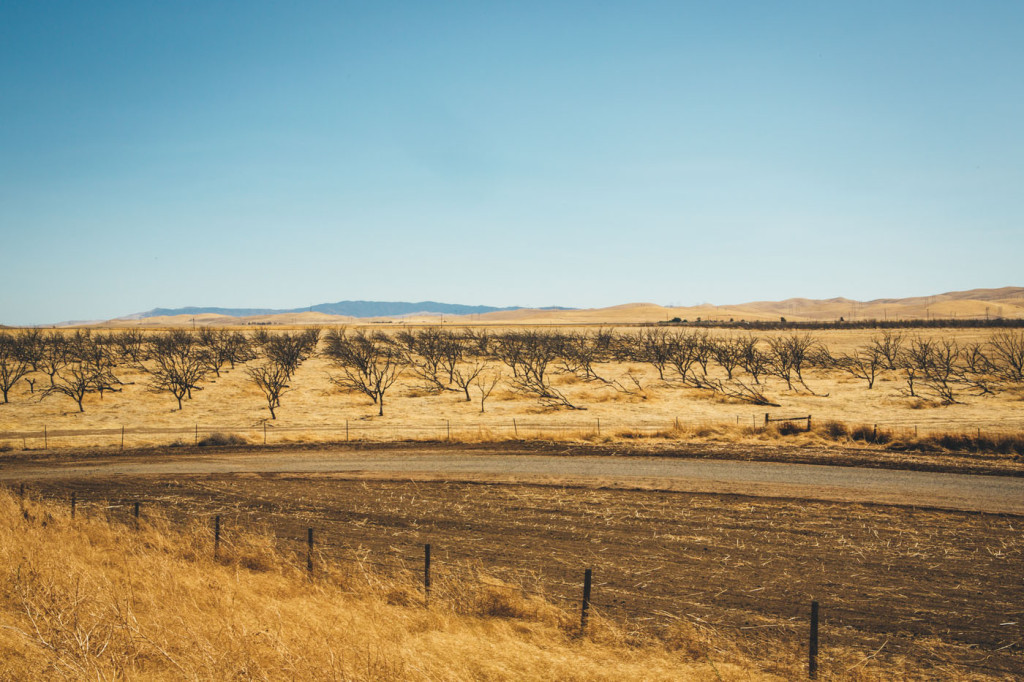
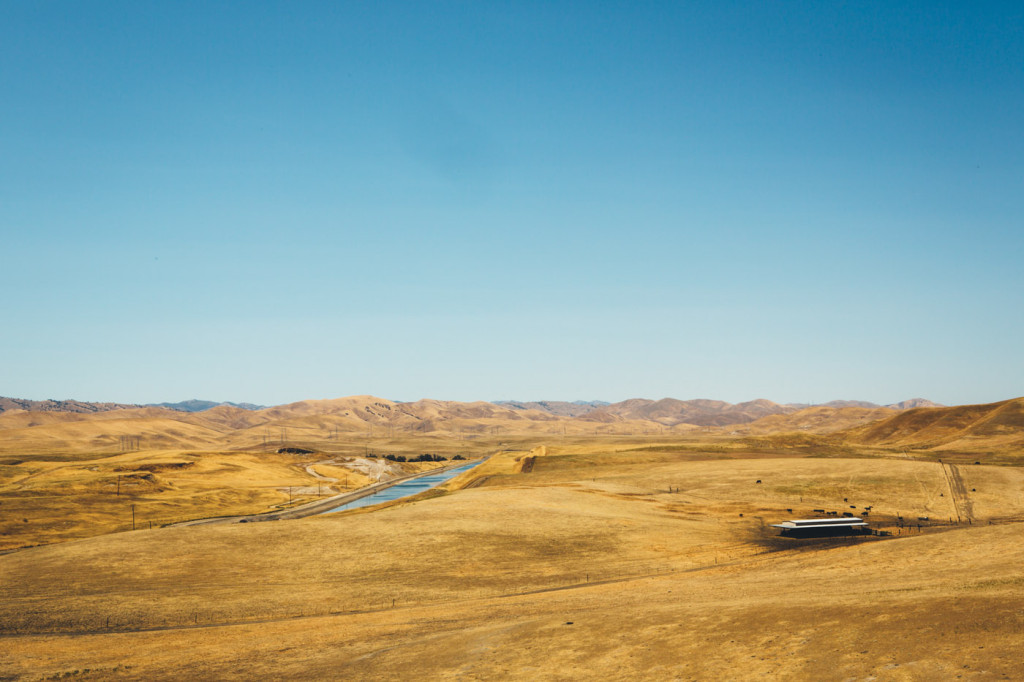
We stop in front of a vacant field. Gill explains how he made the decision last year to uproot one-third of his vines, letting the 80 acres lie fallow. Despite the recent controversy surrounding the product for its debatable contribution to the drought, he’s planting almond trees––a permanent crop––this fall; though they require water year-round beginning in February (less during the winter months when they’re dormant), almonds are easier to farm and are less work to maintain than grapes. The profit is also much higher. Almonds start producing in their second year; in their fourth year, almonds yield enough to carry their agricultural cost–potentially good news for Gill down the road if the drought eases up.
“I’ve seen ups and downs due to the market, but this is the worst drought I’ve seen. The other droughts were never this bad. Last year was the first time in this district’s history when the growers didn’t get any water. That has never happened before,” he says.
The Central Valley Project, a federal water management project under the supervision of the U.S. Bureau of Reclamation, was devised in the 1930s to provide water to farmlands and cities in much of the Central Valley. Water is regulated and stored in reservoirs in the water-rich Sacramento Valley, and transported via a series of canals, aqueducts and pump plants to the water-poor San Joaquin Valley. Despite the benefits of the project, its actions––which have resulted in calamitous environmental and historical consequences––have been mired with controversy throughout its history. In 1992, the Central Valley Project Improvement Act was put into effect, allowing changes to water policies, pricing and distribution.
On our way back we make another stop, this time in front of a neighbor’s farm. Forgotten vines struggle to hold on to their last shades of green. Below, baked weeds blend almost seamlessly into arid dirt. The previous owner of this land couldn’t afford to put in a well and with water cutbacks, there was nothing left for him to do but leave. As I stood there taking in the view in front of me, I could feel the frustration I was hearing in Gill’s voice.
“People are hurt but they’ve been farming long enough that they’re diehards. They’re coming back again even though their ranches went out. They pull out the dead crops, clean up and replant. Water is running out in the Central Valley––we’re overusing it, abusing it, because it was in abundance and nobody cared about use; but nothing is infinite. The kind of expansion that has happened in the Central Valley is beyond imagination, and it’s still expanding. This is not sustainable. We’re damaging the ecosystem. We’re hurting ourselves and hurting the next generation.”
The epicenter of the water strife lies east of San Francisco at the Sacramento-San Joaquin Delta (also known as the California Delta), an expansive inland estuary formed by the confluence of the Sacramento and San Joaquin rivers. The freshwater that feeds into the delta, if not diverted and pumped to the Central Valley, flushes into the San Francisco Bay and out to the Pacific Ocean. In recent years, due to a combination of the drought and regulatory decisions based on the Endangered Species Act of 1973, the U.S. Bureau of Reclamation has turned off much of the water for the San Joaquin Valley in order to protect the delta’s fragile ecosystem, as well as the controversial fish known as the delta smelt.


The Delta Smelt
The federally protected delta smelt––a small fish roughly the size of a finger––is on the verge of extinction in the wild (there is, however, an extant population in state and federal captive breeding programs). Efforts to protect the smelt from getting sucked into the pumps have resulted in the shut-down of large-scale pumping activities in the California Delta. Despite this attempt, the smelt have not rebounded, leading many to question if the pumps were indeed the only culprit. The ongoing drought and limited water delivery to farmlands and cities in the Central Valley has sparked fiery debates between farmers, environmentalists and politicians.
With the drought now in its fourth year, there are varying degrees of frustration amongst farmers depending on which side of the California Delta they live on. South of the delta in the San Joaquin Valley, the severity of the drought multiplies from east to west. In the Sacramento Valley to the north, signs of the drought are not as apparent despite water cutbacks; some growers––specifically rice farmers––have opted to sell a portion of their water to their neighbors in the south, foregoing planting part of their land this season for lucrative water deals of $700 per acre-foot (one acre-foot equals 325,851 gallons).
I travel a few miles over to the second Gill brother, Surinderpal Singh, who has been farming in the San Joaquin valley for the past 39 years. His 700 acres yield grapes (raisin and wine), almonds, pistachios and pomegranates—diversity that has worked out well for him. The original three wells on Surinderpal’s farm—all sitting at 400 feet—have dried up. And with zero water coming from the canal, he had no choice but to put in a fresh well, this time digging down to 1,450 feet.
“This last well I had drilled, the total cost came to $650,000. Smaller farmers don’t have that kind of money to drill new wells. In the last four years, I’ve spent $1.6 million just for water. We’ve done what we can so we’ll see how the future goes. All my savings are depleted.”
Due to the severity and longevity of the drought, wells are getting deeper because everyone is pumping water without limits. The underlying aquifer—California’s largest natural reservoir, spanning the length of the Central Valley—has been slowly collecting water for the past 20,000 years; it is now being depleted at an astonishing rate. After 100 years of a groundwater free-for-all, California Governor Jerry Brown signed a package of bills in September 2014, ending unrestricted groundwater pumping in the state.
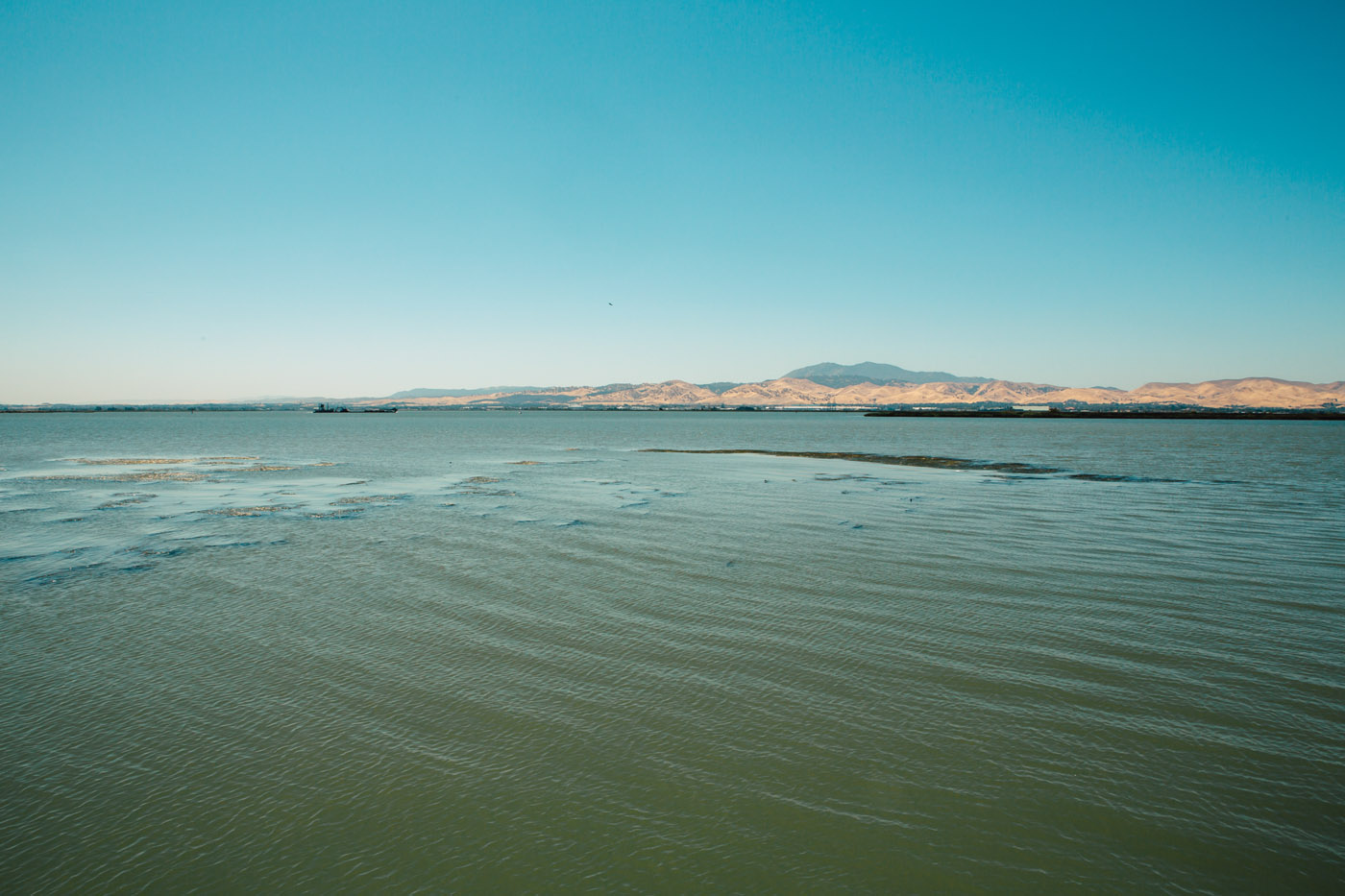
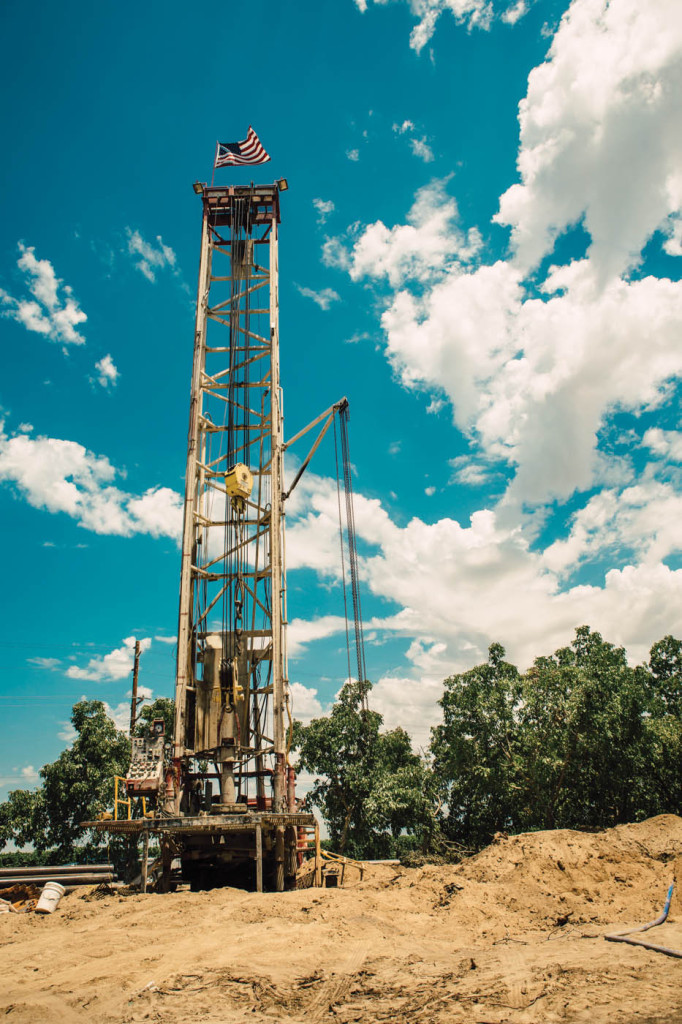

Off Highway 65, in Tulare County, lies the town of Porterville. Located at the base of the western foothills of the Sierra Nevada mountains and the eastern edge of the Central Valley, this small city is my final stop for the day. I’m meeting up with David Gill, a family friend and nephew to the aforementioned Gill brothers. He’s taking me to meet Joe Newsome, a retired farmer with 10 acres of grapes David manages. We arrive at Newsome’s home, a quintessential ranch with a front-porch view of the Sierra foothills. Seated around the kitchen table, Newsome, like a veteran sharing war stories, begins to reflect back to his first experience with a dry spell.
“We had a drought in ‘86 or ’87 but at that time we still had a lot of open ground, and didn’t use the water like we do now. If you had a bad water year, you just don’t farm it for a year until things get better. When we first came here in ‘93, the land west and south of Porterville––most of that area wasn’t being farmed,” says Newsome. “Now it’s all the way through the mountains; pistachios are everywhere in there. They’ve increased the farming acreage to just unbelievable amounts compared to what it was 25 years ago.”
The west side of the Central Valley––from I-5 to roughly 30 miles east––is what farmers refer to as marginal land. Here, the terrain is naturally dry. Groundwater is available but at much greater depths, with some places in excess of 2,500 feet. With more straws than there is water, the unregulated pumping that has taken place over the years has caused portions of the land to sink.
“We can’t sustain this way of farming. We’re the food basket of the world––that’s quite a statement. We send quite a bit overseas—more than 60 percent. In the state of California, we have a greed amongst farmers that’s hard to continue,” says Newsome.
Paramount Farms, the world’s largest grower and processor of almonds and pistachios (450 million pounds of nuts sold globally), possesses 46,000 acres in Kern and Madera counties. It is owned by Beverly Hills billionaires Stewart and Lynda Resnick, who also own brands Wonderful Pistachios, Pom Wonderful pomegranate juice, Halos mandarin oranges and Fiji water. The California agribusiness giant has received some negative attention in the media over the years due to pending lawsuits relating to their high water consumption, political clout, size and continued expansion.

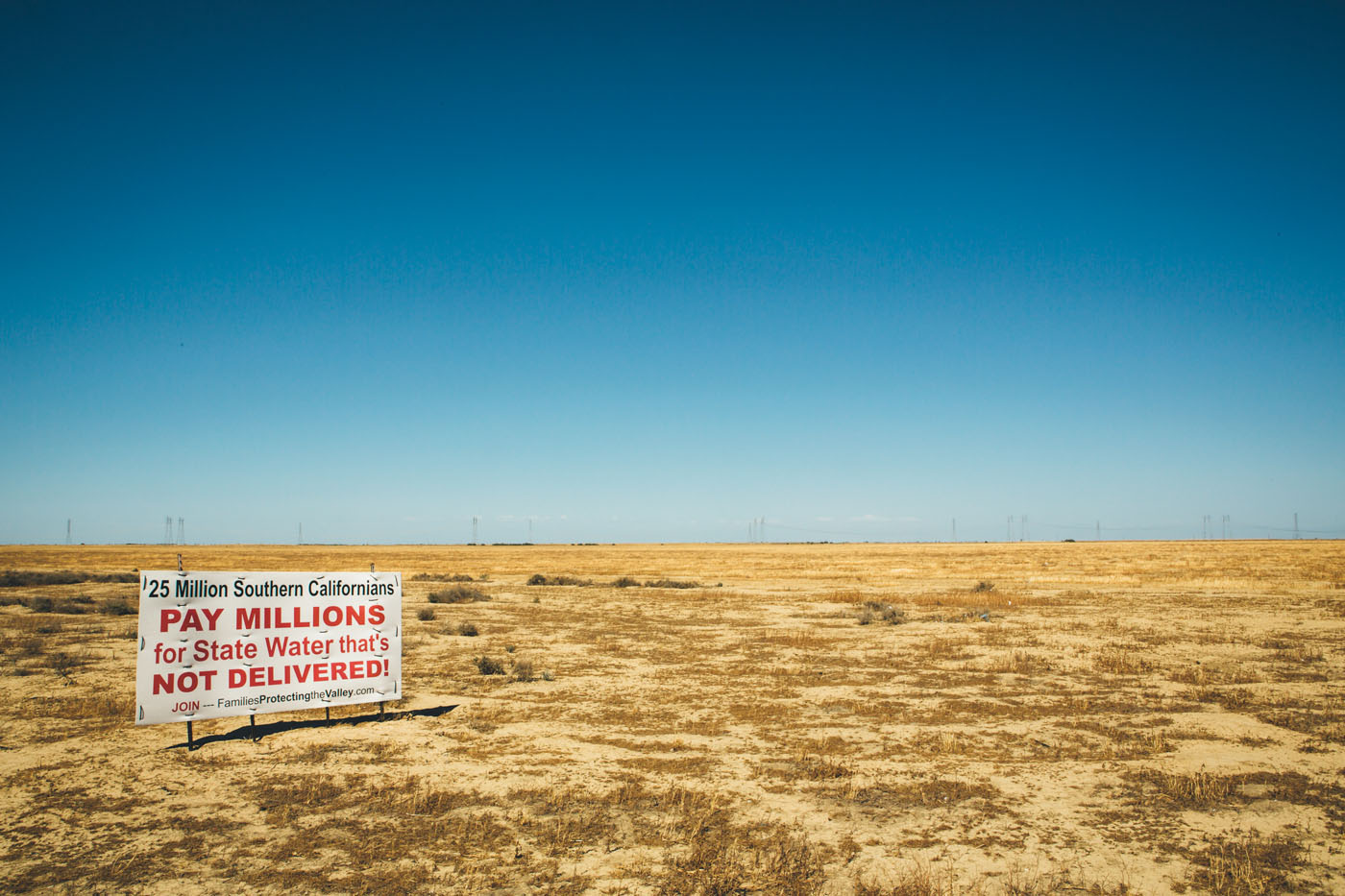
“These mega farms, like Paramount, may be overexpanding and they get a bad rap in the media. But you have to stop and think, who’s going to feed the people? They’re producing a lot of food: almonds, pistachios, oranges, pomegranates––they have economies of scale and can probably do it better than anyone else.” says Newsome. “As far as the little farm, it can’t compete anymore. Some have been lost to bankruptcy and they’ve been in the family for generations––it’s not like it was before. If I was going to take the little land I have and try to make a living out of it, it’s not going to happen.”
Newsome mentions another factor hitting the water-stricken Central Valley: dairy farms. California dairy farmers are the nation’s leaders in dairy production (remember the “Happy Cows Come From California” commercials?). The average dairy requires thousands of gallons of water daily for their cows, both in liquid form and in feed. With water in such short supply to produce locally-grown crops, farmers are being forced to buy feed at record-high prices from outside the state. Those costs will eventually hit consumers in the dairy aisle.
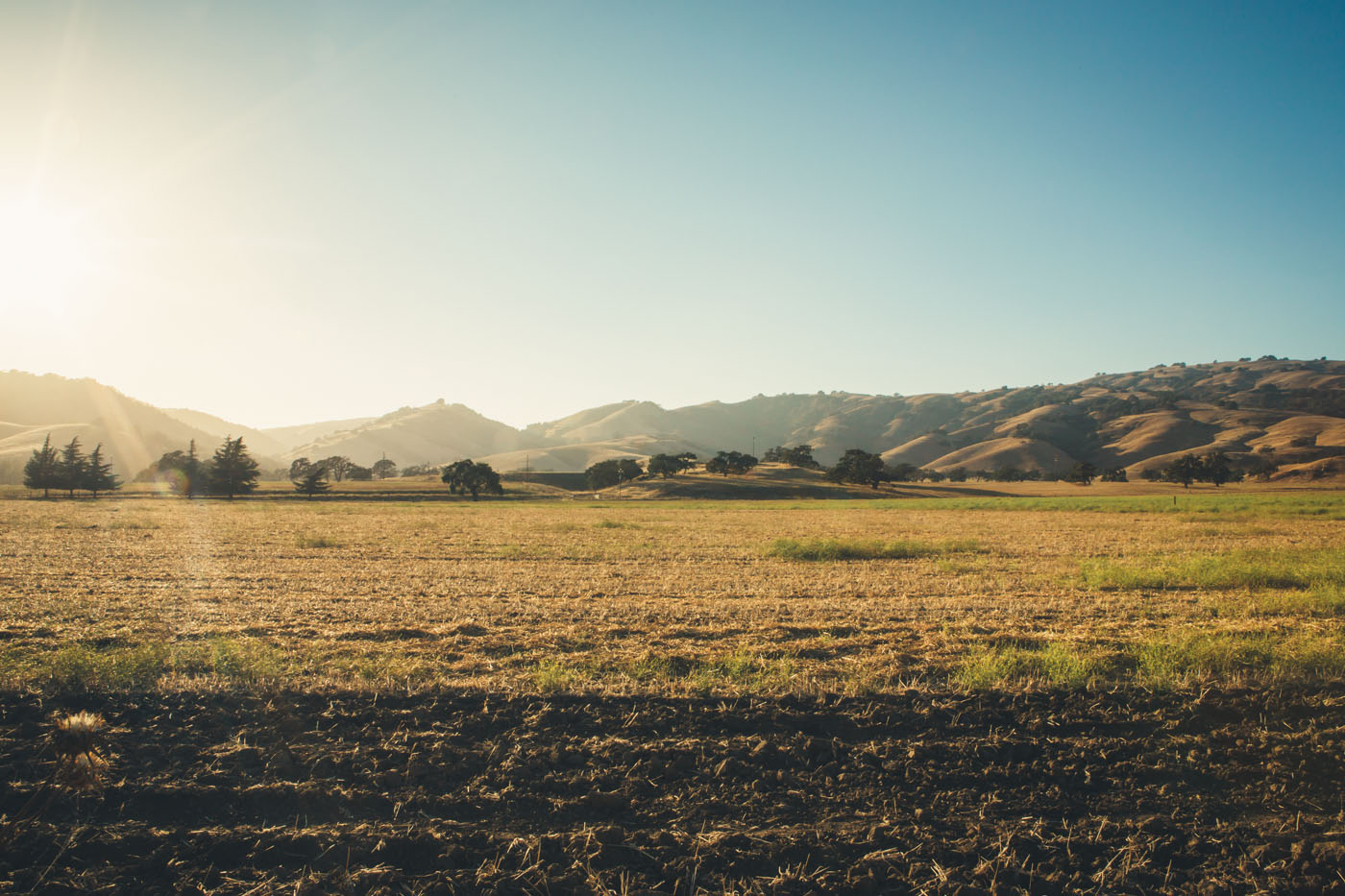
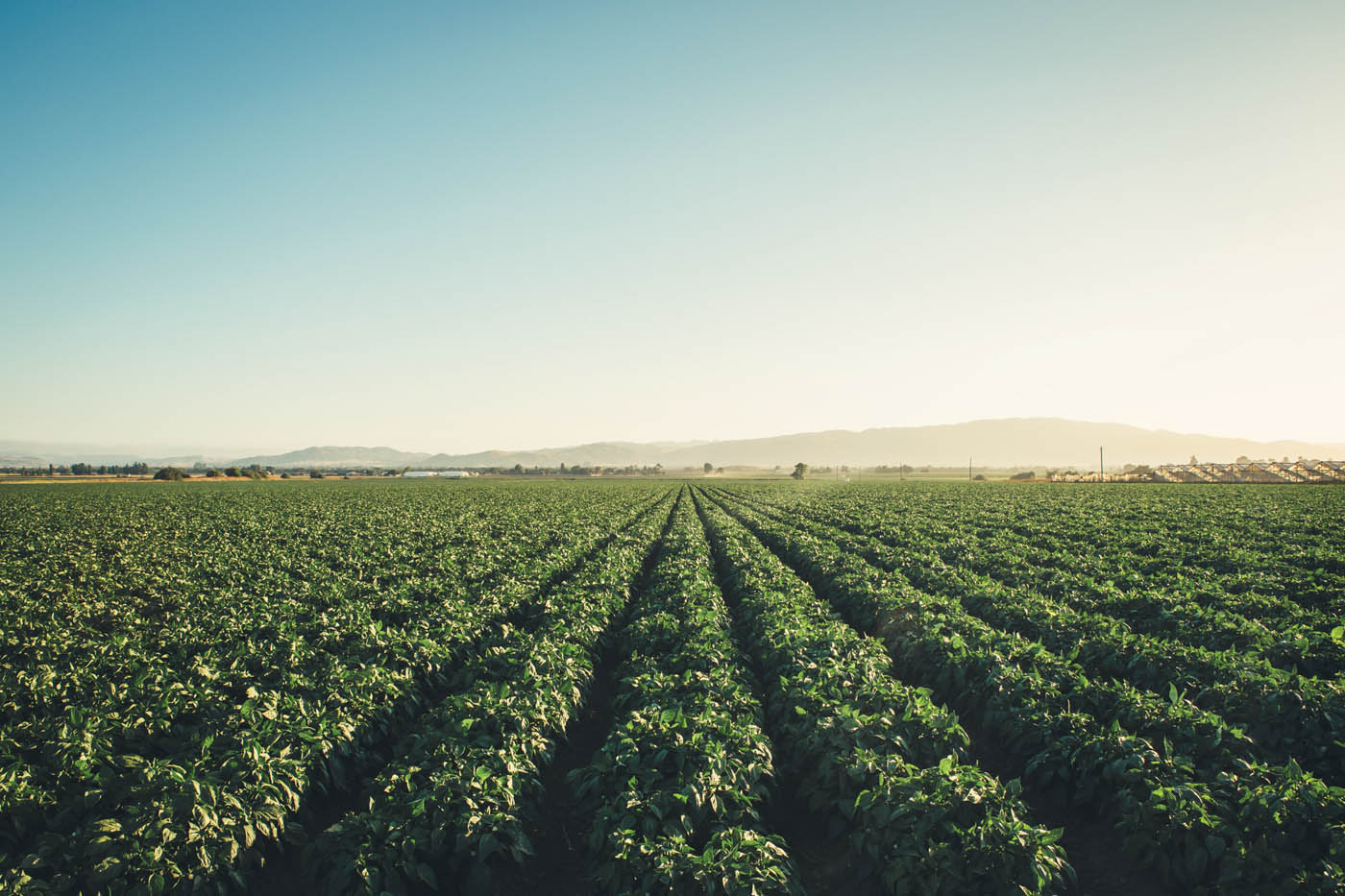
The Sacramento Valley
It’s 3:30 a.m. Bleary-eyed, but functional, I gulp down the last of my free hotel coffee, watching the dreamy lights of San Francisco dance in my rear-view mirror. As I cruise over the Bay Bridge, anticipation starts to build as my next road-trip gets underway.
There’s a certain calmness north of the California Delta. Grapevines are replaced with rice farms, their lush wetlands cooling the eyes despite the 95-degree midday temperature. After a two-and-a-half hour drive from San Francisco, I enter Tehama County just as the first sunrays break over the hills. My destination is Maywood Farms in the small town of Corning, 50 miles south of Redding. I’m here to meet owner/operator Bob Steinacher, the only certified organic fig grower in the area.
Thanks to some foresight, Steinacher isn’t feeling the affect of the current water cutbacks. After experiencing his first drought in 1987, Steinacher drilled two 500-foot wells on his farm and they have served him well.
“We bought the property because it had surface water from our local Corning Canal; that water comes from Mount Shasta. It’s new water, not an old contract. We’re the first to get cut back after south of the delta. The wells have worked out––the water table is dropping but in the last four years, it’s only dropped 12 feet.”
Despite the good news, Steinacher is keeping an eye on the water crisis. The future is cause for some concern.
“Our water comes out of the mountains and percolates into the ground. What’s happened recently is permanent crops are getting planted to the west of us. It used to be rice grown with cheap surface water––that cheap water has disappeared and the surface water is now dirty with all the drip irrigation and micro sprinklers that everyone’s using. It hasn’t impacted us yet because those permanent trees are still young and don’t require as much water just yet,” he explains. “In the next four to five years though, they’ll need much more water. Unless we get good recharge, we could see groundwater dropping much faster.”

The Tipping Point
Driving back down I-5 with my head full of stories and statistics, my perspective of the Central Valley’s western edge has forever changed. I stop at a vista point overlooking the freeway, farmlands, and foothills of the Diablo Range. It’s hard to comprehend and justify the mass-scale farming in such an inhospitable area.
But the reality is, it is being justified––by us, the consumer. Our unsatiated demand for certain foods, irrespective of seasons and proximity to where we live, is continuously being met. But if drought conditions continue, there will come a time in the very near future when the scale will tip; when the land will say “that’s enough.” Without water, there is no food. This fact is irrefutable.
I consider myself to be a fairly liberal person—one who cares for the environment, is socially-responsible, all while being raised by (and becoming) a business owner. After spending time with these farmers, I’ve realized it’s not easy to pick a definitive side in the water wars. Environmentalists want to protect nature, defending those who have no say in what man does to their lives and homes. But should a species nearing extinction in the wild take precedence over the livelihoods of humans? Some of us scream “yes!” but are we willing to go without real cream for our coffees, or almond milk for our nut-infused breakfast cereals? Or pay an exorbitant price for these goods? From a distance it’s easy to take a stance, until those issues start affecting our wallets.
Buzzwords like “organic” and “locally grown” are all the rage, but how many of us really understand what they mean? Pointing fingers at mega farms is easy, but how willing are we to change our lifestyles and buying behaviors? There is a lack of knowledge in our country. If we want sustainable farming in the future––not only for us, but for generations down the line––we need to begin understanding the “why” behind our food.
We may not be able to control Mother Nature, but we can control our relationship with her.







Our comments section is for members only.
Join today to gain exclusive access.